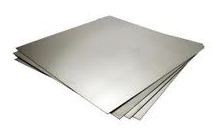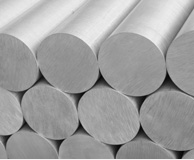Aluminum Alloy Advantages
It has been nearly one month since the announcement of the Lightweight and Modern Metals Manufacturing Innovation Institute (LM3I) and the market has already responded in impressive ways. The goal of the LM3I Institute is to research and design the most energy efficient lightweight metals which will be utilized in a wide range of industries. The price of certain aluminum alloys hasn’t been this high since early 2012 and price continues to fluctuate. Many companies and organizations are responding to this new era of metals in a big way. A number of aluminum alloy manufacturing facilities are now under construction throughout the world and it is estimated that these newer aluminum alloys will result in massive substantial savings in fuel consumption. These facilities are aiming to have aluminum capacities of 900,000 tons.
 Photo Courtesy of Metal Associates
Photo Courtesy of Metal Associates
There are many industries that are affected by the advantages of aluminum alloys. Aluminum alloy cables are ideal to replace copper wires for a number of applications. Aluminum alloy cables have a reduced heat and pressure qualities. Compared to pure aluminum, aluminum alloys have 30% superior tensile strength and elongation capabilities. These alloys are also preferred over copper in some situations where connection stability is vital. Aluminum alloy conductors will maintain a reliable and stable connection even through long periods of overload and overheating. Aluminum alloy cable can support weight their maximum payloads with lengths up to 13123 ft. The higher tensile strength of aluminum alloys are preferred over copper’s 9022 ft. capabilities in certain situations.
 Photo Courtesy of Metalmen
Photo Courtesy of Metalmen
One very essential factor of aluminum alloy cables is the corrosion resistance attributes. These components are resistant to electrochemical corrosion. There has also been a recent innovative announcement to make aluminum alloys with a unique design which will lower the chance of hydrogen charging and stress corrosion cracking by providing cathodic protection. Another interesting development is to manufacture aluminum alloys with a micro-porous surface. This surface will offer a more effective means to transferring heat energy. Micro-porous aluminum alloy could be more than 10 times efficient at heat transfer compared to conventional methods such as micro-channel heat sinks. It will be interesting to see how many new aluminum innovations will be discovered when the LM3I is fully operating.


 Castings & Forgings
Castings & Forgings Bulk Material Handling
Bulk Material Handling Electrical & Electronic Components
Electrical & Electronic Components Flow Instrumentation
Flow Instrumentation Hardware
Hardware Material Handling Equipment
Material Handling Equipment Metal Cutting Services
Metal Cutting Services Metal Forming Services
Metal Forming Services Metal Suppliers
Metal Suppliers Motion Control Products
Motion Control Products Plant & Facility Equipment
Plant & Facility Equipment Plant & Facility Supplies
Plant & Facility Supplies Plastic Molding Processes
Plastic Molding Processes Pumps & Valves
Pumps & Valves Recycling Equipment
Recycling Equipment Rubber Products & Services
Rubber Products & Services